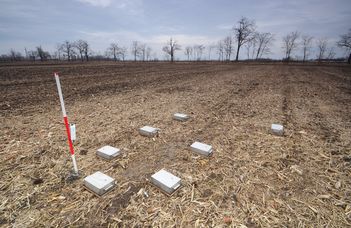
Soil CO2 and N2O emissions based on a long-term tillage experiment
Márton Dencső, II. year PhD-student
Doctoral School of Environmental Sciences - Environmental Geosciences
Supervisors: Barcza Zoltán, Tóth Eszter
Atmospheric concentration of CO2 and N2O increases due to anthropogenic emissions. These greenhouse gases (GHG) contribute to climate change, thus it is highly important to reduce their emissions caused by anthropogenic activities. The main sources of GHG emissions are industry, transportation, and agriculture related such as livestock farming, land use change, fertilization management and soil tillage methods. Different tillage methods are used, e.g. conventional tillage techniques or conservational tillage methods. Tillage can influence GHG emissions via alteration of soil physical, chemical, and biological parameters. It is important to adopt an adequate tillage method on an arable field considering the soil environment and the GHG emissions.
The investigated field trial is a long-term tillage experiment at Józsefmajor Experimental and Training Farm, Heves County, Hungary. The experiment started in 2002 and six different tillage treatments (mouldboard ploughing-(MP), no-tillage (NT), disk tillage, loosening, shallow and deep cultivation) were applied in a randomized design on 10x105 m parcels. The soil is Endocalcic loamic chernozem, which is representative for the region. Crop rotation and adaptive fertilization are under operation. After harvest, plant residues are left on the surface and straw is mixed with the soil during tillage operations.
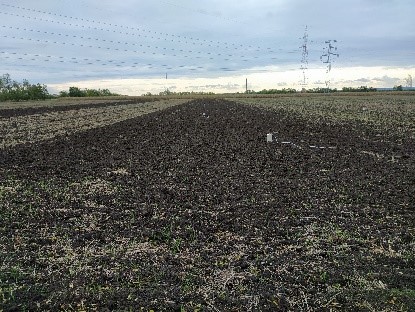
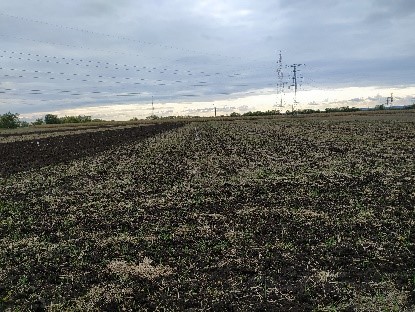
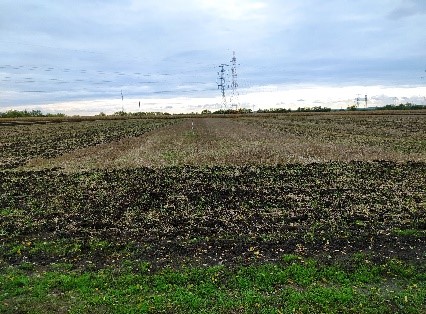
The mouldboard ploughing, the shallow cultivation, and the no-tillage treatments at the Józsefmajor Experimental and Training Farm after tillage practices.
We investigated soil CO2 and N2O emissions in a conventional tillage method of mouldboard ploughing (29 cm tillage depth) and in a conservational tillage method of no tillage (0 cm tillage depth). We chose the shallow cultivation (19 cm tillage depth) as a third treatment to study. Weekly CO2 emission measurements started in 2013 with 7 replicates per tillage treatment, and regular N2O emission measurements commenced in 2019 with 3 replicates per treatment. Besides GHG measurements we monitored governing factors like soil temperature, soil moisture and temperature, and soil chemical –and microbiological parameters. microbiology.
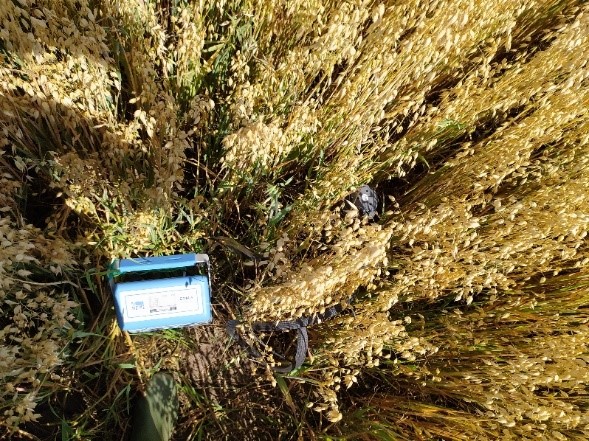
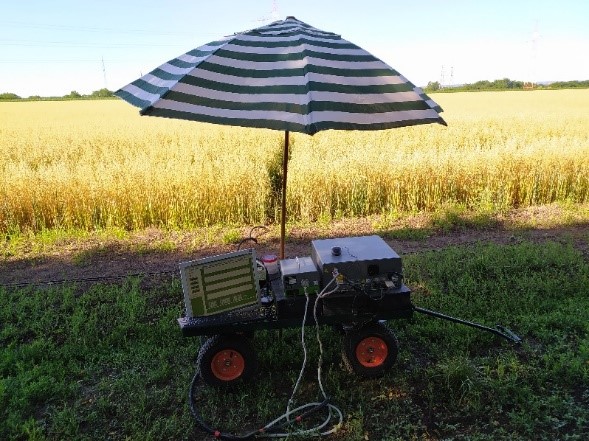
Soil CO2 and N2O emission measurements at Józsefmajor Experimental and Training Farm
Based on 5 year consecutive measurements our results indicate that no-tillage has higher GHG emission than mouldboard ploughing. The difference of the emissions can be originated form the higher soil moisture, carbon and nitrogen content, and different microbial activity in the no-tillage treatment compared to tilled soils. The GHG emission of shallow cultivation is more similar to the no-tillage treatment than to the mouldbord ploughing’s data.
Although conservational tillage method like no-tillage increased soil carbon and nitrogen content on long term compared to the mouldboard ploughing, which is favorable for plants, it also increased the soil GHG emission.
Dencső Márton

